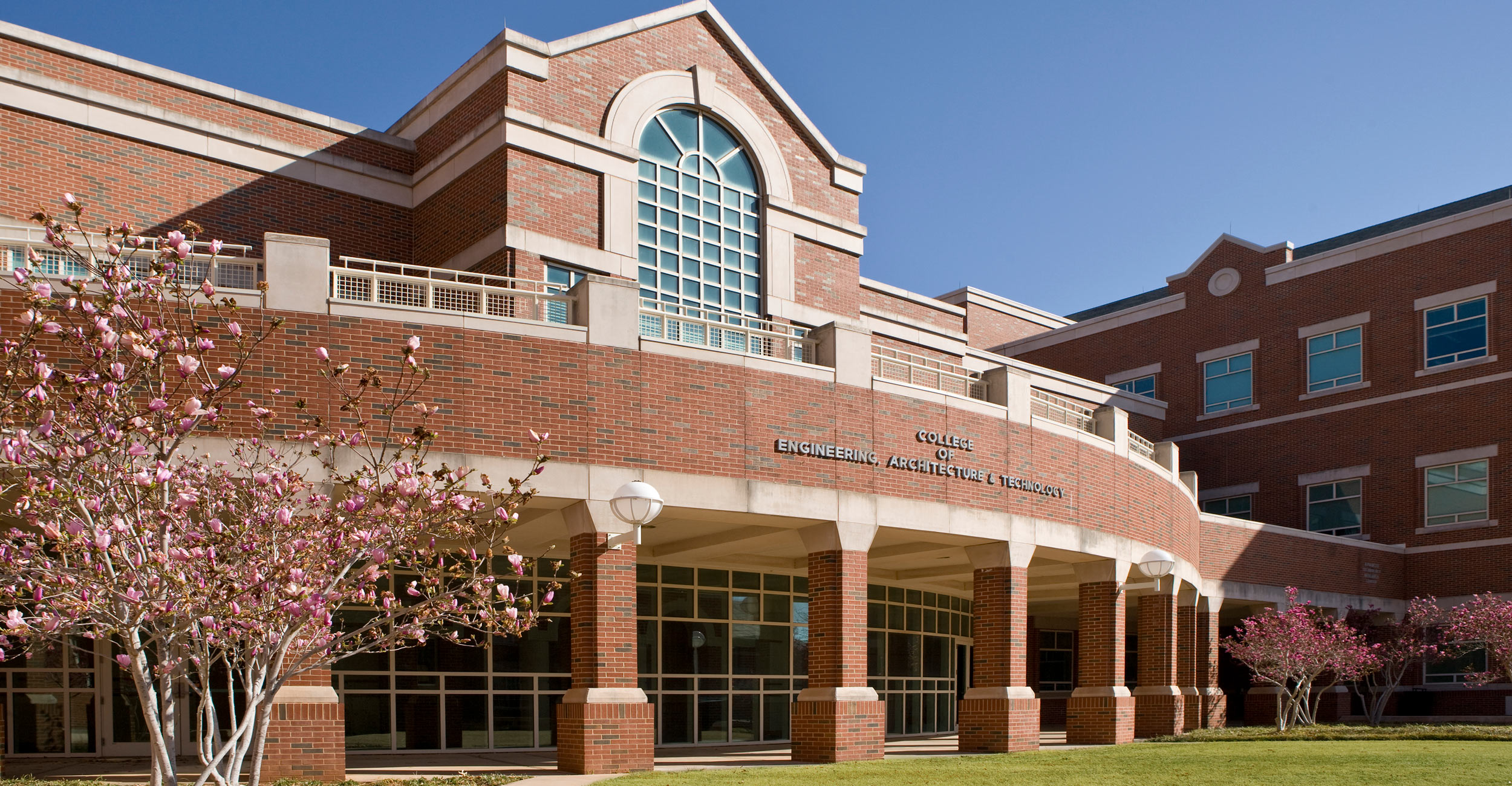
CEAT’s faculty and staff bring diverse viewpoints to the classroom
Monday, January 10, 2022
Media Contact: Kristi Wheeler | Manager, CEAT Marketing and Communications | 405-744-5831 | kristi.wheeler@okstate.edu
Diversity, equity and inclusion are more than just words to aspire to, and the College of Engineering, Architecture and Technology at Oklahoma State University continues to elevate those values.
Through focused efforts, CEAT looks to recruit and retain students from all walks of life who dream they can change the world. CEAT continues to seek and hire educators and researchers with diverse knowledge bases and varying perspectives that enhance their skills as engineers, architects and technologists and better reflect the student body they serve.
IMPACT takes a look at these remarkable professors throughout OSU CEAT.
School of Architecture
Sarah Ra, assistant professor for the School of Architecture, is from Mustang, Oklahoma. She attended OSU for architecture and graduated with honors in 2003 with a Bachelor of Architecture.
Ra then went on to graduate school at Rhode Island School of Design, where she studied adaptive reuse and graduated in 2005 with honors, earning a Master of Interior Architecture.
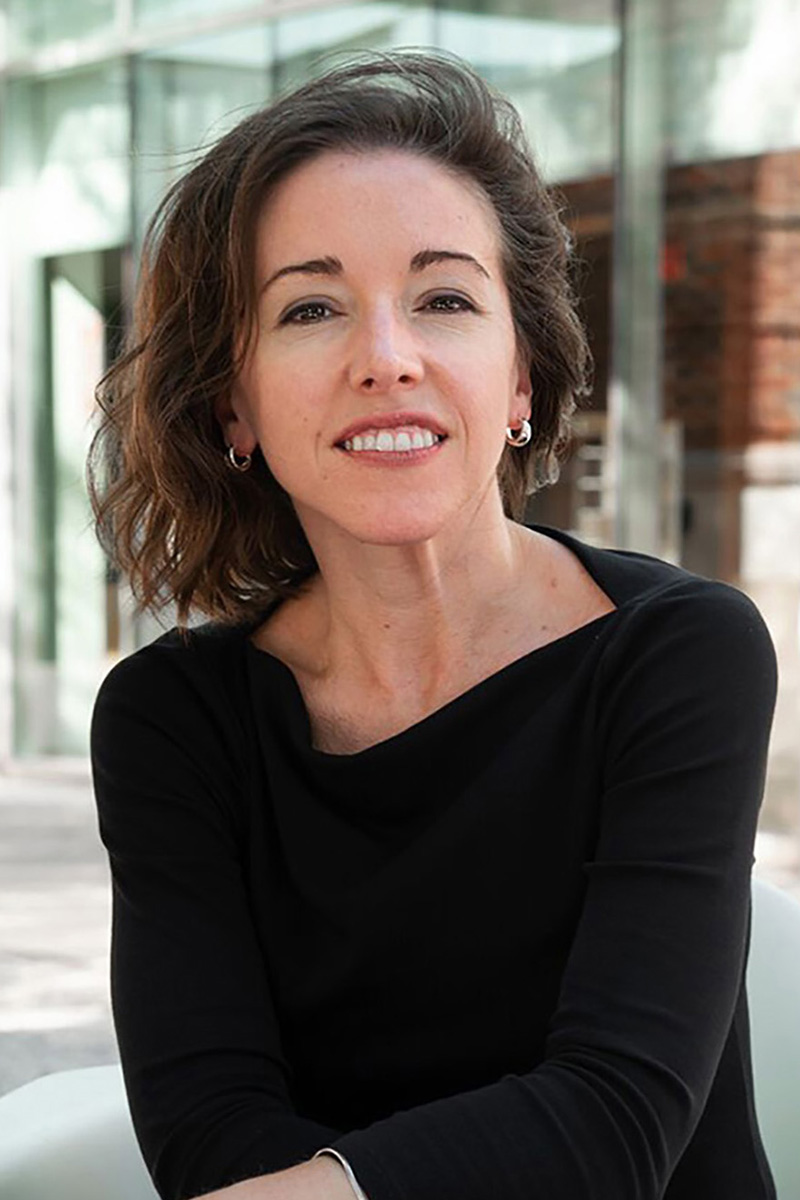
Her graduate studies allowed her to focus on the adaptive reuse of existing buildings, and the creative reimagining of places. She is a licensed architect in Oklahoma (AIA) and a LEED Accredited Professional (LEED AP). Ra also had the opportunity to practice in New York City, where she was able to work on the Seagram building.
Ra has always had an interest in architecture, a love for drawing and travel. She is fascinated by architecture unique to different countries.
OSU’s established and respected architecture program drew Ra to Stillwater. Its long history, which is balanced by change and progress, was another factor. She also saw an opportunity for positive contribution and growth in her field.
Since expanding the travel abroad program, she has become a co-leader of the program to Asia. She also serves as faculty advisor and helped launch a new student organization, NOMAS (the National Organization for Minority Architecture Students). Recently, she was awarded the 2021 CEAT Diversity, Equity, and Inclusion Faculty of the Year Award.
Ra’s research centers on the architecture of Northeast Asia with a focus on contemporary applications of traditional vernacular approaches to design.
“It is particularly important to cultures around the world to maintain their identity while also engaging current technological advancements in order to produce a sustainably built environment,” Ra said. “Globalization has posed unique challenges to cultural identity (such as homogenization of place), but much is to be gained by sharing what makes us and our architecture unique.”
Ra revived the “History of Asian Architecture” course, a unique offering among schools of architecture. John Bryant, former head of the school in the mid-1970s, pioneered this offering and upon his retirement in 2002 it too was retired. It hadn’t been taught at OSU again until Ra came along. Ra was Bryant’s TA for the course when she was a student.
She and her husband, fellow CEAT faculty member Seung Ra, created and led an Asian study abroad trip for our students that is very popular. They have designed programs for students to see and experience Seoul, Tokyo, Kyoto, Singapore and Hong Kong.
“I like to provide opportunities for my students to apply the principles they learn in class to speculate on potential contemporary applications of these traditional approaches for the built environment,” Ra said.
Assistant Professor Keith Peiffer received the national “Emerging Faculty Award” from the Building Technology Educators Society, for new faculty who demonstrate excellence and innovation in teaching building technology subjects.
Peiffer teaches Architectural Materials, Criticism and Theory, as well as Design Studios for second- through fourth-year students, where he exhibits his love of the making of architecture.
Peiffer is a licensed architect with more than a dozen years of professional experience on the East Coast (with several award-winning projects too) before joining OSU.
School of Biosystems and Agricultural Engineering
Dr. Saleh Taghvaeian is originally from Iran. His grandfather was a farmer in northeast Iran, where water scarcity is the main challenge in producing agricultural crops.
When the time came to decide about a major in college, Taghvaeian went with irrigation engineering, because he was interested in developing and implementing engineering tools to improve water availability and food security.
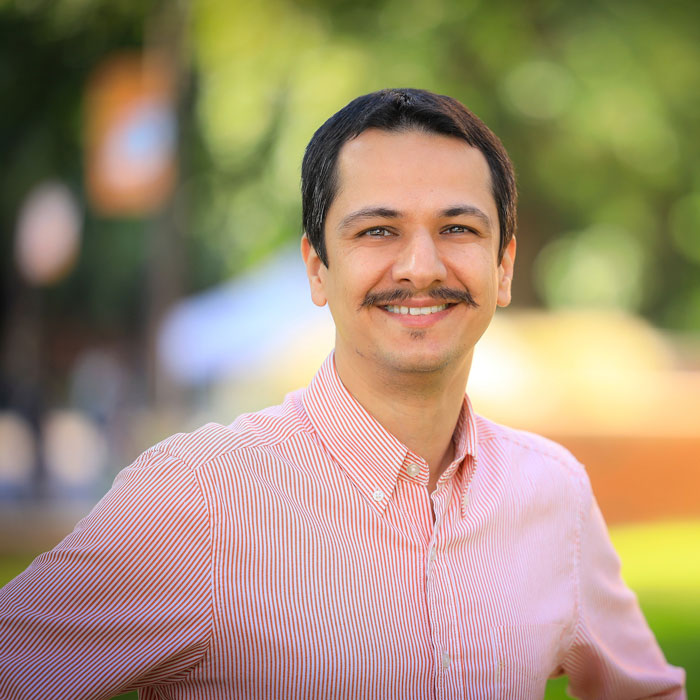
The applied aspect of an engineering degree and a focus on irrigation technology would allow him to be involved in tackling the challenging problem of feeding a growing population with declining water resources and to have an impact on the quality of life of many people in his home country and around the world.
Taghvaeian received his undergraduate and master’s degrees from Iran and then moved to the U.S to pursue his doctorate in Irrigation Engineering at Utah State University. After graduation, he served as a postdoctoral fellow at Colorado State University, where he was involved in several projects on balancing competing water demands of agricultural crops and rapidly growing urban populations.
Taghvaeian has been with the School of Biosystems and Agricultural Engineering (BAE) at OSU since 2013.
“I was extremely honored to be offered a position here. This university and department has a long, well-respected history in designing and developing innovative engineering approaches to solve complex agricultural and natural resources issues,” Taghvaeian said. “After joining OSU, I discovered that the strong academic programs here are accompanied with a unique sense of family and warm hospitality that transforms this place beyond just a workplace.”
Taghvaeian’s current research is focused on improving the productivity of agricultural water consumption to ensure the financial viability of farming communities while preserving precious water resources for other critical uses.
Water is the most limiting agricultural input, especially in western parts of the state where surface water resources are limited, groundwater resources are declining, and droughts are common.
Using advanced sensor technologies and computer models, Taghvaeian aims to reduce irrigation losses and increase the amount of crop produced per every drop of water used. Accomplishing this goal requires collaborating with engineers and scientists from diverse disciplines.
“Minimizing potential adverse impacts on the environment is another main aspect of my research,” Taghvaeian said. “In addition, as an extension specialist, I work closely with our farmers from across the state to understand their water challenges. I then design and modify my research to address these challenges and take the findings back to stakeholders to share and seek their feedback.”
School of Chemical Engineering
Dr. Mohammed Al Dushaishi is an assistant professor in the School of Chemical Engineering.
He grew up in Saudi Arabia, and later attended college in the United States. Dr. Al Dushaishi attended Missouri University of Science and Technology in Rolla, where he earned his bachelor’s degree in mechanical engineering, master’s degree in petroleum engineering and a doctorate in petroleum engineering.
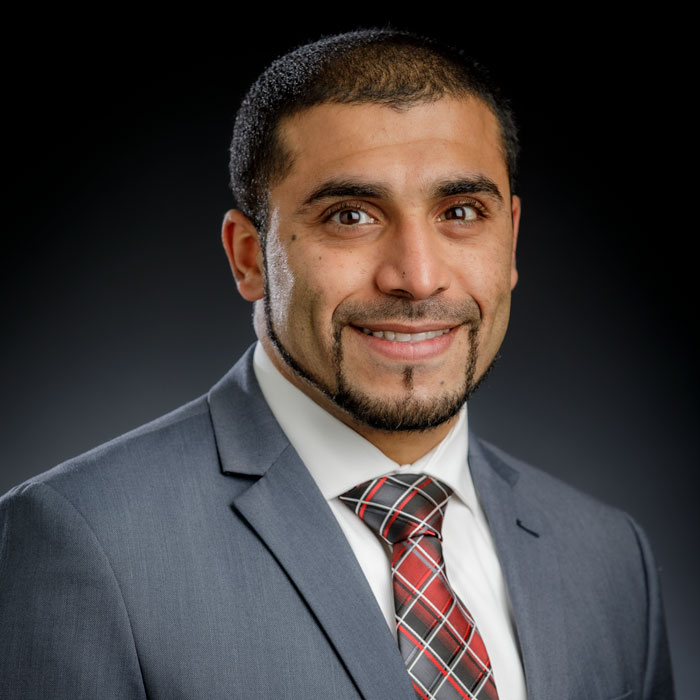
Before coming to OSU, Dr. Al Dushaishi was an assistant professor in the School of Engineering at Texas A&M International University for three years. Throughout the three years he was there, he taught multiple courses including engineering graphics, statics and dynamics, thermodynamics, engineering project management, system engineering capstone design, and drilling.
In that time, he also averaged an overall student teaching evaluation of 4.6/5. His decision to join OSU in January 2020 was heavily influenced by how prominent OSU is in the world of research.
“As a Tier 1 research institution, OSU provides ample research opportunities and the privilege to work with highly qualified undergraduate and graduate students. Another important aspect that attracted me to OSU was the highly qualified faculty that I get to work with,” Al Dushaishi said.
Although young and still fairly new at OSU, Dr. Al Dushaishi has proven to be a prominent researcher in petroleum engineering and is making a huge impact on the world of engineering. His research is focused on the aspects of subsurface drilling operations to optimize drilling efficiency and reduce non-productive time. Within that research area, he has specifically been working on characterizing and modeling drillstring natural and induced vibrations, as well as their overall impact on drilling performance.
He is a sub-recipient of a 1.1-million-dollar Department of Energy grant addressing drilling optimization for deep geothermal wells, where his main contribution to the project is characterizing drillstring vibrations and their effect on drill bit dynamics.
Recently, Dr. Al Dushaishi has been awarded a grant by the National Technology and Engineering Solutions of Sandia, LLC/DOE to evaluate and enhance the drilling performance of two recently drilled geothermal wells for the Utah Frontier Observatory for Research in Geothermal Energy (FORGE) project sponsored by DOE. The objective of this grant is to use modern rate of penetration models, specifically designed for hard rock geothermal drilling, and deliver a drilling optimization program to be used to drill new planned wells in the same area.
Dr. Al Dushaishi has published 10 peer-reviewed journal papers and 20 conference papers. His research interests include drilling fluids and hydraulics, lost circulation events and treatments, bit rock interactions, fluid-structure interaction, wellbore integrity, and data analytics. Al Dushaishi hopes that through his research the cost of subsurface energy extraction will be reduced, creating an opportunity for more affordable energy.
At OSU, Dr. Al Dushaishi has taught three courses so far — two undergraduate and one graduate — where he averages 4.9/5 overall teaching evaluation. He is a technical reviewer for several high-impact factor journals, such as the Journal of Natural Gas Science & Engineering, SPE Journal, and Energies and Materials Journal.
School of Civil and Environmental Engineering
Dr. Jorge Gonzalez-Estrella is an assistant professor in Civil and Environmental Engineering
and joined CEAT in Fall 2020.
Originally from Mexico City, environmental engineering caught his attention right before he started college, as he saw multiple opportunities to learn and apply topics that he was attracted to — such as chemistry, mathematics, environmental sciences, biology and design — so he could prevent and remediate contamination.
“I truly enjoy outdoor activities, and environmental engineering offered multiple opportunities to apply technical concepts while giving back to nature,” Gonzalez-Estrella said.
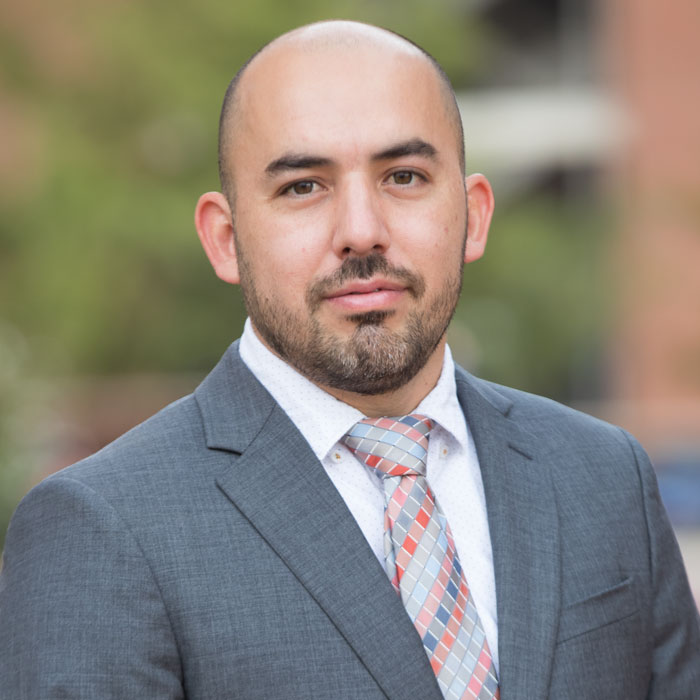
Gonzalez-Estrella has a bachelor’s degree in environmental engineering from the University of Veracruz in Mexico; a master’s degree in environmental sciences with a focus on environmental engineering from the Institute for Scientific and Technological Research of San Luis Potosi in Mexico; and a doctorate in environmental engineering from the University of Arizona.
After Gonzalez-Estrella graduated from the University of Arizona in 2014, he worked as a postdoctoral research associate at the South Dakota School of Mines and Technology in a project focused on waste-to-energy funded by the Department of Defense.
In 2017, he joined the University of New Mexico as a postdoctoral research associate and continued working as a research assistant professor until the summer of 2020. At the University of New Mexico, Gonzalez-Estrella research activities were part of the METALS Superfund Research Center, the Center for Water and the Environment, and the UNM Center for Native Environmental Health Equity.
“I chose OSU because it is an ideal university to establish a research group,” Gonzalez-Estrella said. “At OSU, we have ample opportunities for interdisciplinary collaboration, state-of-the-art facilities and research centers, and plenty of opportunities for professional growth.
“My research group — The Gonzalez-Estrella Environmental Engineering (GE3) Research Group — is focused on three main areas: fate and microbial toxicity of priority pollutants in water and soil, (bio)transformation of perseverant pollutants, and (bio)remediation of contaminants.”
His research group investigates biological and physicochemical mechanisms driving degradation processes, mobility and effects of contaminants on water and soil to advance knowledge and develop transformative technologies.
“Our current projects are funded by the National Institute on Minority Health and Health Disparities (NIMHD) and the United States Geological Survey (USGS),” Gonzalez-Estrella said. Our goal is to understand generation mechanisms of microplastics in remote and underserved communities as well as the occurrence of microplastics in freshwater systems of Oklahoma.
“Our research informs the general public, government entities and the scientific community about potential effects of microplastics on the environment and human health.”
Division of Engineering Technology
Dr. Hitesh Vora was born in Gujarat, India. His parents migrated to neighboring Mumbai
looking for better educational opportunities for their two sons.
Vora, who was inquisitive by nature and loved problem solving, was drawn to engineering. He completed his bachelor’s degree in production engineering from the University of Mumbai in 2006 and was encouraged by a mentor to pursue graduate studies.
Vora came to the United States to pursue his master’s degree in mechanical engineering technology and then his doctoral degree in material science and engineering, both of which he received from the University of North Texas.

After working as a postdoctoral researcher, in January 2015, Vora accepted an assistant professorship in the Department of Mechanical Engineering Technology at Oklahoma State University, choosing to make Stillwater his family’s permanent home.
Vora has a passion for teaching, where his philosophy is focused on creating a safe, secure, encouraging and motivational learning environment that encourages exploration, innovation and creativity in his students.
“Students are an integral part of society and have a pivotal role in shaping its future,” Vora said. “Teaching and mentoring are the most vital service I can provide to them.”
In addition to teaching, Vora is extensively involved in research relating to the field of energy engineering and management. He is the director and principal investigator of the Industrial Assessment Center (IAC) at OSU, as well as the U.S. Department of Agriculture’s Rural Energy Assessment Center (REAC). The IAC is funded by the U.S. Department of Energy to provide its clients with industrial assessments that will help their businesses reduce energy and waste while increasing productivity.
The DOE recently announced that they would provide $60 million in funding to university-based IACs, of which Vora’s IAC was awarded $1.75 million to focus on improving productivity, enhancing cybersecurity, promoting resiliency planning and providing training to entities located in disadvantaged communities. The REAC provides energy assessments and audits to small rural businesses and agricultural producers in the state of Oklahoma that will help reduce their energy and waste while increasing their productivity.
An associated goal with these programs is to produce graduates who are technically competent and able to handle all facets of client relations and communication so that they are prepared to serve as energy engineers and managers.
Another area of Vora’s research is in additive manufacturing, where his team was recently awarded funding through the Oklahoma Center for the Advancement of Science and Technology-Oklahoma Applied Research Support program that will go towards the development of next-generation smart heatsinks.
Heatsinks aid in the regulation of electronic or mechanical device temperatures by transferring or dispersing heat away from the device. The objective of this research is to create a highly innovative heatsink design by using efficient manufacturing processes and advanced material systems to create heatsinks that will have high thermal conductivity, mechanical strength, corrosion resistance and the ability to be used in a variety of atmospheric conditions.
Vora is a matrixed professor in the ENDEAVOR lab’s digital manufacturing makerspace and has developed and led educational efforts in the field of 3D printing from entry level freshmen and sophomore student projects to advanced level junior and senior student projects. That requires the students to make functional parts and prototypes of advanced materials for their industry-led capstone projects or upper-division class projects.
Division of Electrical and Computer Engineering
Dr. Wooyeol Choi is an assistant professor in the School of Electrical and Chemical
Engineering at OSU. He is originally from Seoul, South Korea, and moved to Stillwater
in 2018, after spending several years in the Dallas area.
Choi knew from a young age that he wanted to be a scientist of some kind when he grew up.
“I was the boy who loved to tear things apart and put them back together (almost),” Choi said. “My parents were very supportive of my curiosity which helped me find my love of engineering later in life.”
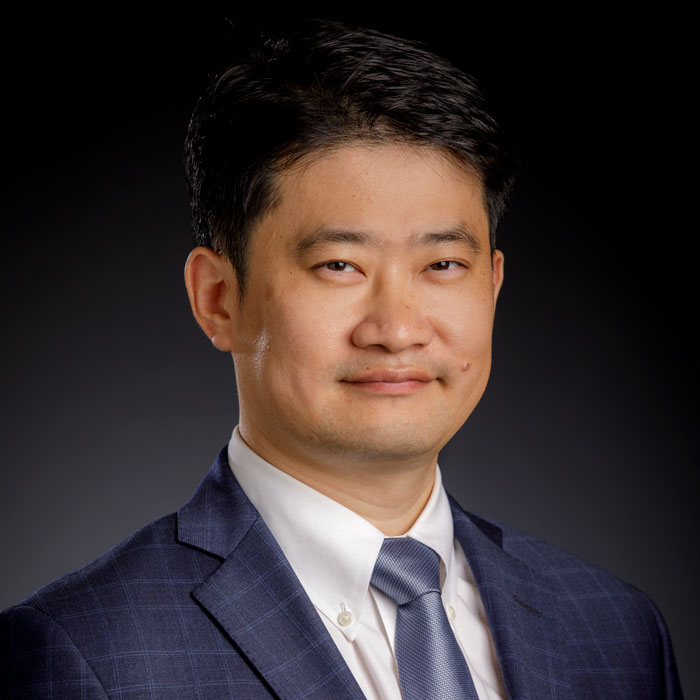
Choi graduated from Yonsei University in Seoul in 2001 and went on to pursue his doctorate in electrical engineering from Seoul National University, which he received in 2011. Soon after graduation, Choi accepted the position of research associate and was later promoted to assistant research professor at the University of Texas at Dallas.
In 2018, Choi accepted an assistant professor position at OSU.
“My biggest motivation to come to OSU was the research infrastructure and great research faculty that I have the privilege of working alongside,” Choi said. “ECE at OSU is a leader in my research field and Stillwater is a beautiful, friendly place that is a perfect fit for my family, as well.”
Choi recently started participating in the LunarCom research project with fellow colleagues at OSU, the University of Oklahoma-Tulsa, the University of Tulsa and NASA’s Goddard Laboratory.
The multi-disciplinary group is trying to build a proof-of-concept system that efficiently and effectively combines laser optical and radio frequency communication systems into a hybrid architecture which will allow for a faster, more reliable and more robust communication system between the Earth and the moon. This project is being supported by NASA and its Established Program for Simulating Competitive Research (EPSCoR).
Choi is also working with Texas Instruments in the development of high frequency electronics in high-resolution imaging radar. Choi is investigating the use of new compact radar circuits that operate a frequency five times higher than those used in current automotive radars.
Choi hopes that this application will allow for automotive systems such as collision avoidance to detect smaller sized objects, farther away in vision impaired environments, such as a foggy morning.
Choi’s area of interest is in electronic circuit design, specifically those operating at high frequencies.
“Whenever you see any electronic device do something wirelessly, from good old AM radios to ultra-fast 5G mobile phones, to cars that can see 300 feet away through fog using radars, you are seeing high frequency circuits at work,” Choi said. “I am always investigating ways to make those electronic systems work faster, more efficient, more affordably and eco-friendly.”
School of Industrial Engineering and Management
Dr. Juan Borrero is an assistant professor in the School of Industrial Engineering
and Management and has been with OSU since August 2017.
He grew up in Bogota, Colombia, and attended the Universidad de los Andes, in Bogota, for his bachelor’s and master’s degrees. He later attended the University of Pittsburgh to earn his doctorate.
In his undergrad, Borrero studied mathematics, but then switched to industrial engineering for his master’s and doctorate.
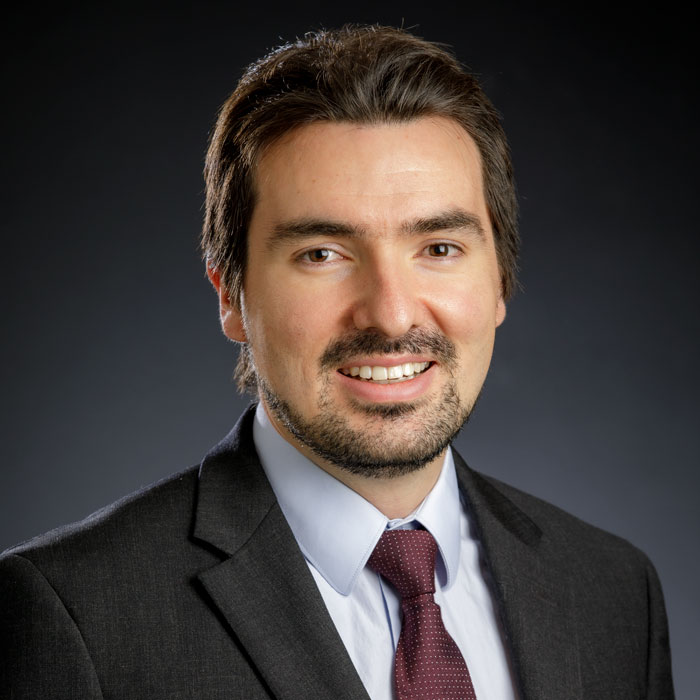
“The deeper you go into pure math, the more abstract it becomes,” Borerro said. “At the end of my bachelor’s, I wanted to explore a different route and wanted to see how mathematics could be applied to solve problems in industry, government, healthcare, among others, so I became more interested in engineering, more specifically, industrial engineering.”
Prior to earning his doctorate and coming to OSU, Dr. Borrero was an instructor in the industrial engineering department at Universidad de los Andes. He said his decision to join the faculty at OSU was partially fueled by the fact that the IEM department is the third oldest industrial engineering department in the U.S., behind Penn State and the University of Pittsburgh.
“As such, IEM at OSU has a lot of tradition in IE, particularly, IEM at OSU puts significant emphasis in the engineering part, which for me is important because in my field there are departments that although are IE, look more like computer science or applied math,” Borerro said.
Additionally, the influx of new faculty, prioritization of high-quality research, new engineering facilities and the fact that many IEM faculty were working in his area of research helped him solidify his decision to join OSU.
Borrero has done research in many different aspects of industrial engineering, but he is currently focusing on two topics: optimization under uncertainty and propagation influence problems in networks.
For the first, his emphasis is on problems when the optimizer/decision maker must decide under uncertainty but has little data or information about it. This issue comes up in many applications, including critical infrastructure protection, smuggling prevention, defender/attacker problems, disaster operations management and more. The main challenge that Borrero has run into in his research is that it is unreliable to use methods based on standard statistics because they require to reliably estimate distributions for data.
Because of this, his research is focusing on providing a new mathematical and algorithmic framework to model these issues. Through this he hopes to provide solutions that are adaptable/immunized to uncertainty and that have performance guarantees.
Borrero’s second research focus has two aspects to it: how to allocate resources into different modes of propagation in order to minimize the time until the information propagates to the network and identifying and removing groups of covert actors that spread negative influence in order to minimize the influence that they have in the network.
In order to do this, he uses tools from graph theory, Markov chains and combinatorial optimization to model the problems and design efficient algorithms to solve large scale instances. His research in this area is aimed to improve online social networks, communication networks and networks of unmanned aerial vehicles by providing decision-support tools for managers in order for them to operate their networks more efficiently.
Borrero has taught three undergraduate courses and three graduate courses so far at OSU and he is actively involved in various on-campus organizations. Though he is still young, he has already made a great impact on the IEM program through his involvement and research.
School of Mechanical and Aerospace Engineering
Dr. Jamey Jacob is the John Hendrix Chair and Professor of Aerospace Engineering in the School of Mechanical and Aerospace Engineering (MAE) at Oklahoma State University.
Jamey Jacob was born in Oklahoma City and grew up in Mustang, Oklahoma, in the flight path of Will Rogers World Airport, where he first discovered his love of flight.
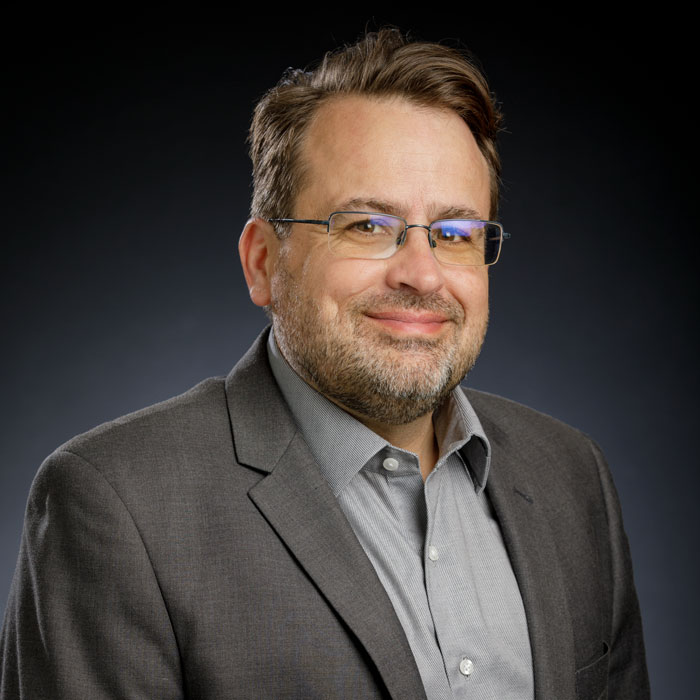
Building remote control aircraft in high school gave him the experience to work on systems for weather research as an undergraduate student. Jacob graduated from the University of Oklahoma with a bachelor’s degree in aerospace engineering in 1990. From there, he went on to pursue and obtain his doctorate in mechanical engineering from the University of California-Berkeley in 1995. Shortly after, Jacob accepted a position as an associate professor in mechanical engineering at the University of Kentucky in 1996, where he worked for a decade.
In 2006, Jacob then accepted a full professor position in aerospace engineering at OSU and has been an integral part of the faculty in the College of Engineering, Architecture and Technology.
“Through their Design/Build/Fly expertise, OSU had built a national reputation on designing small aircraft and taking them to the air, very unique at the time. This was a strong attraction for me and led me back to Oklahoma,” Jacob said.
Jacob is the director of the OSU Unmanned Systems Research Institute (USRI) and his main area of research interest is in the development and implementation of unmanned aerial systems for a myriad of different applications, particularly focused on weather and the environment. He was the lead principal investigator for the CLOUD MAP (Collaboration Leading Operational UAS Development for Meteorology and Atmospheric Physics) program, a $6 million effort funded by the National Science Foundation’s focused on the use of UAS for collecting and monitoring data presented during different atmospheric phenomena.
He followed this up with a $5.2 million program funded by the NASA University Leadership Initiative. The WINDMAP (Weather Intelligent Navigation Data for Aviation Planning) program is focused on developing systems to support Advanced Air Mobility as part of NASA’s Unmanned Traffic Management.
Jacob is also involved with several other NASA supported projects including investigating and developing the use of an inflatable UAS system for deployment on other planets such as Mars, Venus, and Pluto. A team of researchers, including Jacob, is testing the efficacy of high-altitude balloons, currently being used to monitor infrasound waves in Earth’s atmosphere as a detection method for earthquakes, for monitoring and collecting atmospheric and ground data on Venus.
As part of a recent NASA Innovative Advanced Concepts (NIAC) Program, the USRI team is developing a decelerator for a future lander for the exploration of Pluto. He also mentors the NACA Microgravity University and Space Cowboys rocket teams.
Jacob has been involved in the development and adaptation of UAS-based surveillance of natural-gas pipeline and identification of possible faulty equipment or leaks as part of a collaborative project with GE and Baker Hughes. His team at USRI has also been involved in the development of a collision avoidance system for UAS as part of an initiative to secure beyond-visual-line-of-sight clearance from the FAA in collaboration with Vigilant Aerospace Systems.
Future initiatives include centers focused on Counter-UAS and drone applications for weather.
“As drones become more prolific, they will both serve as a threat as well as a tool for scientists and researchers,” Jacob said.
This brings Jacob’s path to OSU’s drone dominance full circle.
“My interest in drones started in high school and then continued through college as part of an effort to design drones to study severe weather,” he said. “Now we’ve extended this to help develop systems to fly on other planets, while still pushing the envelope to use these systems to better understand natural hazards here on Earth.”
School of Materials Science and Engineering
Dr. Do Young Kim, an assistant professor in the School of Materials Science and Engineering and is originally from Seoul, South Korea. He received both his bachelor’s and master’s degrees in physics at Kyung Hee University. His interest in physics started when he was in high school.
“Physics seemed to be a treasure chest full of answers to all my lifelong questions about the universe,” Kim said. “At the time, those around me tried to dissuade me from majoring in physics, saying I would starve. However, 30 years later, I still have no regrets about my choice. Studying physics back then was a critical foundation for my current research capability.”
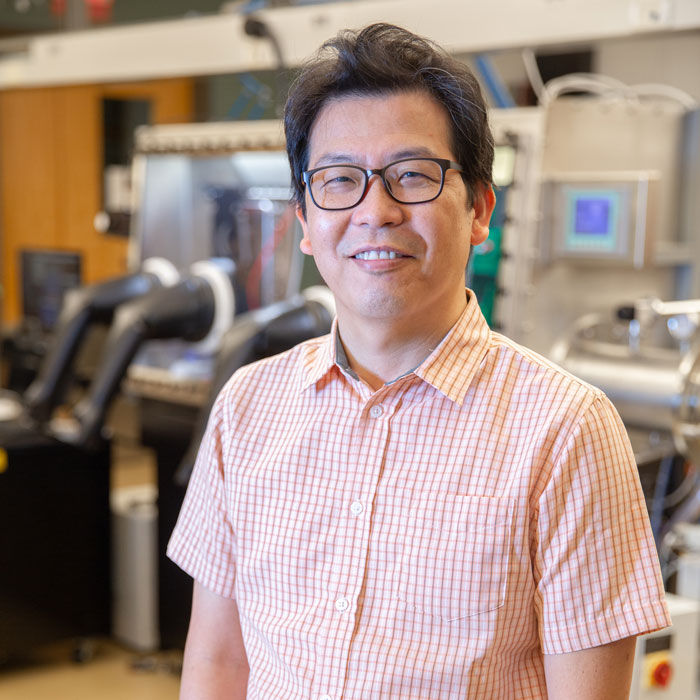
Kim’s interest in engineering started when he had the opportunity to conduct semiconductor and display research as a graduate student at KHU, where he first encountered semiconductor materials and their device applications.
“The laboratory was very active, and I was able to acquire a broad range of experimental skills including semiconductor thin film deposition and photolithography,” Kim said. “I used these skills to fabricate countless semiconductor devices including Si thin-film transistors (TFTs).”
After receiving his master’s degree, Kim worked as a research scientist at the Samsung Advanced Institute of Technology in South Korea, developing the poly-Si TFT technology on plastic substrates which is a core technology in flexible organic light-emitting diode (OLED) displays.
“Among the many aspects of this research, I have concentrated on studying the room-temperature deposition of amorphous silicon films on plastic substrates and the excimer laser crystallization of these films,” Kim said. “Using these poly-Si films as the active channel, I have fabricated TFTs and measured their electrical characteristics. Through this deep research involvement in semiconductor materials, their processes, and their device applications, my interest in engineering grew, especially MSE.”
Kim received his doctorate in MSE at the University of Florida in 2009 and was there for 10 years conducting research on organic/inorganic nanomaterials discovering their fundamental electronic and optical properties and exploiting them synergistically in device embodiments.
Kim didn’t know much about OSU or its engineering program. During the on-site interview, however, the facilities, equipment, and administrative support attracted him. In particular, the Helmerich Research Center, which would allow him to focus on his research interests.
Kim has explored the new display and sensor applications based on the IR-OLED that he originally invented.
As a first promising application of the IR-OLED, he invented an innovative infrared-stimulated self-emitting projection display. Despite unsatisfactory image quality, especially in brightness and contrast ratio, and the subsequent need for a darkened room, conventional projection displays are still used extensively in company meeting rooms, school classrooms, and churches because there is currently no alternative technology.
Therefore, there is a clear societal need and market opportunity for alternative display technologies with extremely-large display screens and at the same time excellent display image quality like high-end OLED TVs.
Kim’s research group has also investigated the possibility of perovskite solar cells in the space power markets for their low cost, low weight, adaptability to flexible architecture, and tolerance to high energy particle irradiation (mainly protons).
Halide perovskites are a rising star in the photovoltaic community and the current champion perovskite cell shows high efficiency over 25 percent, comparable to the state-of-the-art Si solar cells.
“While perovskite solar cells are vulnerable to oxygen and moisture, there is no oxygen or moisture in space, thus expected for perovskite solar cells to be very suitable for space application,” Kim said. “Furthermore, direct in-space assembly of perovskite solar panels especially on the lunar surface are very critical for future NASA space missions. Unlike the brief visits to the Moon during the Apollo program more than 50 years ago, NASA has a plan to develop an Artemis Base Camp to support longer expeditions on the lunar surface. The planned base camp is expected to require a lot of electrical powers. If we could fabricate solar panels directly on the lunar surface, it would be greatly beneficial to establishing sustainable long-term exploration of the Moon.”
Story by: CEAT Marketing Team | IMPACT Magazine
